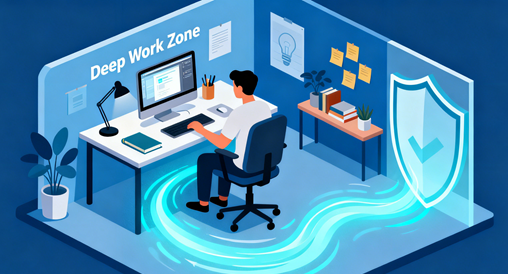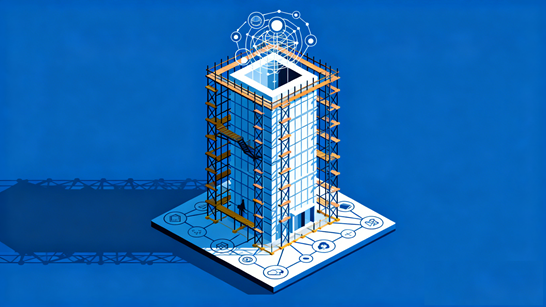The Digital Nomad Nervous System Optimizer
Optimize your nervous system for the digital nomad lifestyle. This neuroscience-based system addresses the unique cognitive challenges of location-independent work, from environmental adaptation to distributed presence management.
The Digital Nomad Nervous System Optimizer: Thrive in Motion
The digital nomad lifestyle presents unique neurological challenges: constant environmental changes, shifting social contexts, and unpredictable work conditions. This system optimizes your nervous system for geographical freedom while maintaining cognitive stability and peak performance.
The Neuroscience of Location Independence
The Nomadic Nervous System Challenge
Environmental Instability Stress The human nervous system evolved for environmental consistency. Constant location changes create:
- Cognitive Load: Continuous re-orientation and adaptation
- Sensory Overload: New stimuli requiring constant processing
- Circadian Disruption: Changing light patterns and time zones
- Social Recalibration: Building new connections while maintaining old ones
The Stability-Mobility Paradox How to maintain neurological stability while embracing geographical mobility?
Neuro-Adaptation Framework
Portable Cognitive Anchors Create neurological consistency through ritual and routine:
Morning Activation Sequence
- Consistent wake-up ritual regardless of location
- Standardized preparation exercises
- Familiar work initiation protocols
- Stable cognitive transition into work mode
Environmental Consistency Design
- Portable workspace elements that travel with you
- Standardized lighting and acoustic preferences
- Familiar tools and setup procedures
- Consistent work-break rhythms
The Distributed Presence System
Timezone Neuroscience
Cognitive Performance Cycling Optimize work scheduling based on neurological capacity across timezones:
Home Timezone Preservation
- Maintain stable sleep-wake cycles when possible
- Schedule demanding work during biological prime time
- Use strategic light exposure to stabilize circadian rhythms
Client Timezone Adaptation
- Identify overlap windows for real-time collaboration
- Schedule communication during mutual cognitive peaks
- Build in recovery time after intensive cross-timezone work
Multi-location Cognitive Mapping
Rapid Environmental Orientation Develop skills for quick neurological adaptation:
Spatial Navigation Optimization
- Practice cognitive mapping in new environments
- Identify consistent landmarks across locations
- Develop mental models for quick orientation
- Use technology to reduce spatial cognitive load
Social Context Switching
- Maintain neural pathways for different social circles
- Practice context-appropriate communication styles
- Build bridges between disparate social networks
- Schedule relationship maintenance across distances
Nervous System Regulation Protocols
Vagal Tone Optimization for Nomads
The vagus nerve is crucial for stress resilience during constant change:
Daily Vagus Nerve Practices
- Deep Breathing: 4-7-8 breathing pattern for nervous system calm
- Cold Exposure: Morning cold showers or face immersion
- Social Connection: Meaningful video calls triggering oxytocin release
- Vocal Vibration: Humming or singing to stimulate vagus nerve
Autonomic Nervous System Monitoring
- Track heart rate variability as stress indicator
- Monitor sleep quality across different environments
- Notice digestion changes as nervous system signals
- Adjust travel pace based on physiological feedback
Sensory Integration Management
Novelty-Routine Balance Maintain optimal neuroplasticity without overwhelm:
The 70-30 Principle
- 70% familiar routines and environments
- 30% new experiences and challenges
- Adjust ratio based on current nervous system capacity
- Monitor cognitive performance as guide for balance
Sensory Overload Prevention
- Schedule quiet periods after intense sensory experiences
- Create device-free zones and times
- Practice sensory grounding techniques
- Use nature exposure for sensory reset
Implementation Framework
Pre-Location Transition Protocol
48-Hour Preparation Phase
- Mental rehearsal of new environment
- Research and virtual familiarization
- Packing using standardized systems
- Neurological preparation exercises
24-Hour Adaptation Phase
- Gentle arrival without work demands
- Sensory mapping of new environment
- Circadian rhythm adjustment
- Workspace setup using portable anchors
Location Stabilization Phase
Days 1-3: Environmental Integration
- Establish daily routines and rhythms
- Build cognitive maps of local area
- Set up consistent workspace
- Begin work with reduced intensity
Days 4-14: Performance Optimization
- Ramp up to full work capacity
- Optimize schedule for local conditions
- Build local social connections
- Refine systems based on environment
Transition Preparation Phase
48-Hour Wind-down
- Complete work commitments
- Prepare for next location mentally
- Conduct nervous system assessment
- Pack using systematic approach
Advanced Neurological Optimization
Circadian Engineering Across Timezones
Light Exposure Management
- Use light therapy for gradual timezone adjustments
- Maintain consistent light exposure patterns
- Avoid blue light during wind-down periods
- Maximize morning light for circadian entrainment
Meal Timing Strategies
- Use meal times as circadian anchors
- Gradual adjustment of eating schedules
- Consistent meal composition across locations
- Strategic fasting for timezone adaptation
Cognitive Performance Preservation
Focus Block Engineering
- Schedule demanding work during stable periods
- Build in cognitive recovery time after transitions
- Use environmental consistency for deep work
- Monitor focus quality as indicator of adaptation
Memory Consolidation Optimization
- Maintain stable sleep despite location changes
- Use review sessions to reinforce learning
- Create multiple retrieval pathways for important information
- Leverage novelty for enhanced memory encoding
Sustainability Metrics and Adjustment
Nervous System Health Indicators
Physiological Metrics
- Heart rate variability trends
- Sleep quality and consistency
- Energy levels throughout day
- Stress indicator tracking
Cognitive Performance Measures
- Focus duration and quality
- Problem-solving effectiveness
- Memory recall speed and accuracy
- Creative thinking capacity
Lifestyle Pace Adjustment
The Sustainable Mobility Index Rate these factors monthly:
- Number of location changes
- Timezone跨度
- Environmental stability
- Social connection quality
- Work intensity and demands
Adjustment Protocol Based on metrics, adjust:
- Travel frequency and distance
- Work load and client commitments
- Social engagement intensity
- Self-care practice frequency
Crisis Prevention and Management
Early Warning Signs
Nervous System Overload Indicators
- Increased anxiety or irritability
- Sleep pattern disruption
- Digestive issues
- Cognitive fatigue and brain fog
- Decreased motivation and enjoyment
Intervention Protocols
- Immediate reduction in novelty and demands
- Increased routine and familiar activities
- Intensive self-care and nervous system support
- Professional help seeking when needed
Building Neuro-Resilience
Future Self Visualization
- Regularly imagine handling challenges successfully
- Pre-activate coping neural pathways
- Build confidence in adaptation abilities
- Develop flexible identity as adaptive traveler
Stress Inoculation Practices
- Gradually increase challenges within capacity
- Practice recovery after mild stressors
- Build toolkit of proven coping strategies
- Develop community support systems
Stop fighting your nervous system and start optimizing it for freedom. Click "Use This Template" to build a digital nomad lifestyle that works with your biology, not against it.
Öffnen Sie den Zeitplan-Ersteller zum Anpassen und Exportieren.

The Freelance Deep Work Ecosystem
Transform your freelance work from constant context-switching to sustained deep focus. This system creates cognitive zones, matches projects to mental energy, and builds flow state triggers for maximum productivity and creativity.
View details

The Freelancer's Power Week
Master your freelance business with this integrated weekly schedule. This template uses Themed Days to balance client work, admin tasks, and skill development, preventing burnout and boosting income. Perfect for remote freelancers.
View details

The Knowledge Architecture Engineering System
Engineer robust knowledge architectures that withstand academic pressure. This system uses cognitive science principles to build interconnected knowledge frameworks, optimize neural pathways, and create durable academic understanding.
View details
